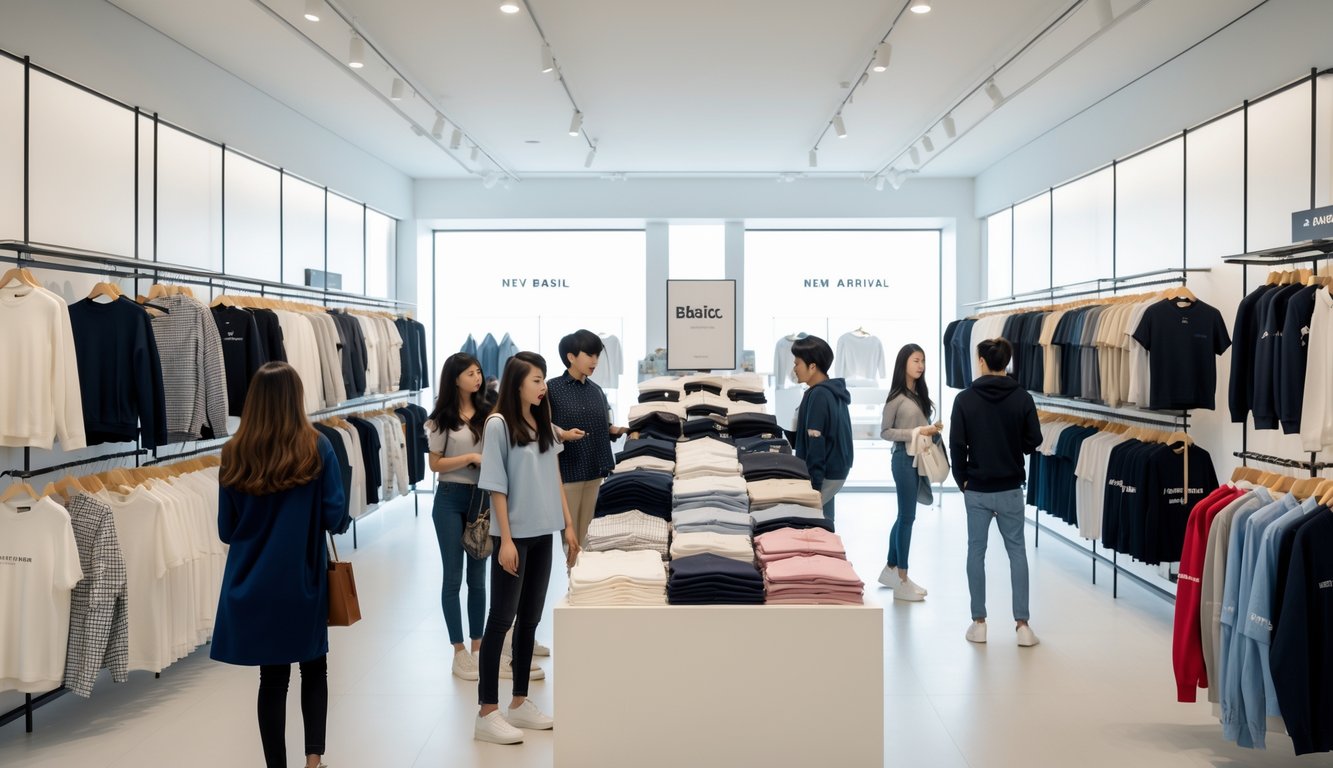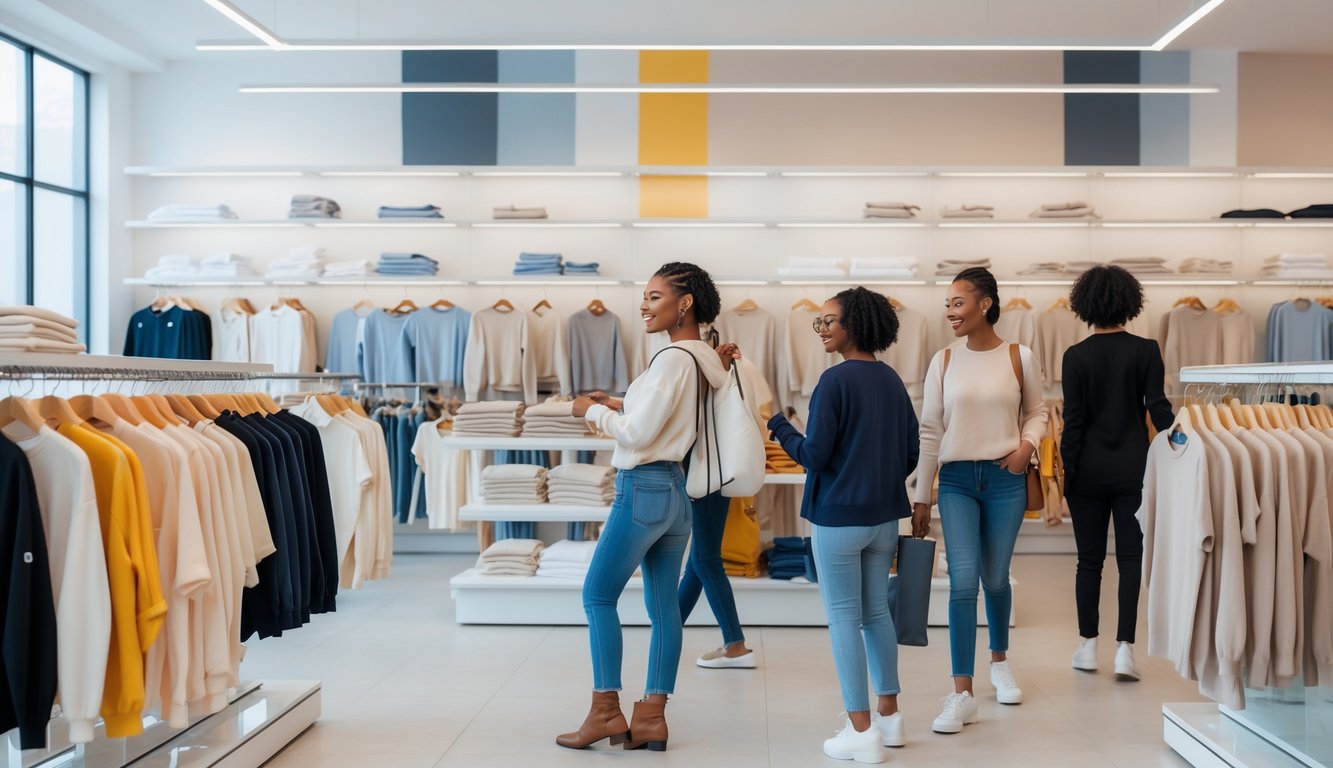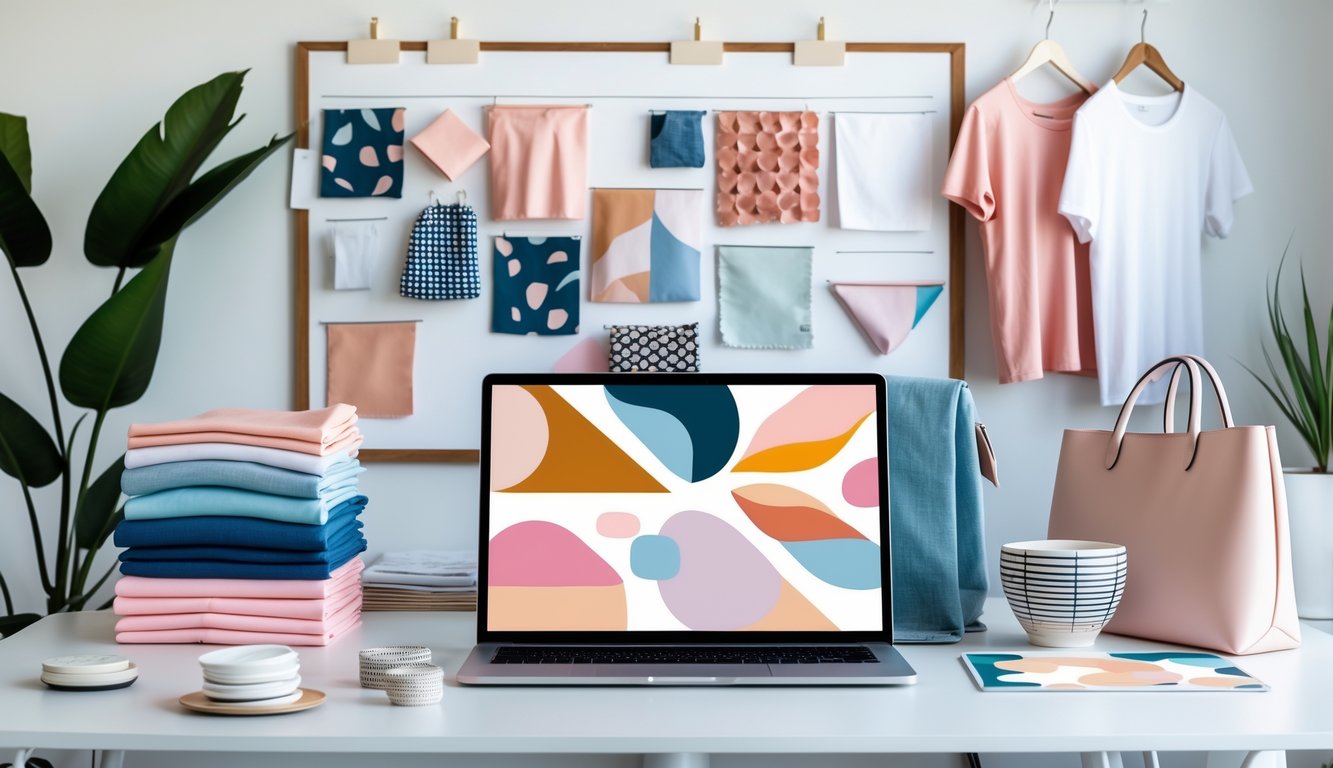
So, stripes on that button-down—am I the only one who’s just over maximalism? Patterns are everywhere. Bold geometrics and squiggly retro toiles are getting shoved at us by designers and “trend consultants.” Suddenly, you can’t even build a wardrobe unless you’ve got a fortress of basics to balance it all out. Pattern trends this year are just flooding closets. Basic tees, tanks, straight-leg jeans? Gone faster than last season’s TikTok mascara. I swear, at my last trade show, three buyers almost wrestled over ribbed versus flat-knit cotton. I checked Patternbank’s dashboard twice (because why trust my own eyes?), and yeah, it’s basics all the way.
Prints are blowing up, but then my friend panic-buys a five-pack of black tees after seeing a paisley slip skirt. Why? Who knows. It’s not just about what’s “in”—brands keep churning out the same white button-ups, over and over. Vogue Business says hyper-trend cycles basically force labels into this endless basics loop. Not innovation—just survival mode. I try to keep up, but Google Trends looks like a stock market crash, and people still dodge every wild pattern for a plain tank.
My dermatologist’s SPF advice is more stable than this market. Patterns catch your eye, but what do I actually end up washing every week? Basics. Just basics. Clean lines, easy layers, nothing sparkly or weird. Maybe that’s why, according to sellers on quarterly calls, shoppers now treat a new basic as a “statement.” Not just some invisible thing under the drama.
What’s Driving the Surge in Demand for Basics?

Finding the right t-shirt used to mean grabbing whatever was clean. Now? Brands can’t keep plain crewnecks in stock, and everyone’s obsessed with “timeless closet essentials.” This isn’t nostalgia. Ask Agustina Panzoni—she blames micro-trend burnout for the basics boom. Nobody’s pretending it’s about “utility” anymore. The need feels way less rational than that.
Changing Lifestyles
Everything’s “remote,” except not really. My friend claims her “WFH” joggers work for brunch too. Pandemic shifts trashed routines, so now athleisure is a movement, not a trend. People buy fewer statement pieces—just rotate basics: white tees, hoodies, cargo pants, Merino knits. I check wash times more than my phone notifications.
Google Trends shows “classic white shirt” and “best plain sweatshirt” searches are spiking. Lip gloss and “dupes” used to own those numbers. Laundry isn’t simpler, but picking outfits is. Weirdly, people want their clothes to blend in. Is that comfort, or just giving up?
Social Media Influence
TikTok spits out a “Capsule Closet Must-Haves” video every half minute. Sometimes I can’t tell if I’m being sold a $60 Hanes tank or a subtle anti-capitalist rant. Trend patterns spread so fast through styling “challenges” that even the blandest basics (ribbed tank, baggy denim) sell out.
Micro-influencers style the same top six ways and suddenly I feel left behind. Who What Wear says the most viral basics are barely different from last year’s, but still cause new demand spikes. I scroll Pinterest for “minimalist wardrobe” and get 45 brand sponsorships. Authenticity? Sometimes it’s real, sometimes it’s pure FOMO.
Consumer Mindset Shifts
You’d think chasing trends means peacock colors, but my group chats are endless “functionality vs. fun” debates. No consensus. People say they’re over fast micro-trends, now chasing “quality” and “timeless investment.” (But a $90 cotton tee? Pass.)
Vogue Business experts claim the basics obsession is relief from trend fatigue—endless niche patterns, dopamine dressing, stuff you wear three times and toss. But honestly, “wardrobe refinement” is just as trend-driven, hidden under “sustainability” and “reusability.” If demand drops, will anyone keep these basics forever? Or just until beige is out again? Even my laundry basket can’t decide.
The Role of Trending Patterns in Modern Aesthetics

Every time I think I’ve cracked the pattern trend code, something like an iridescent polka dot blazer shows up in my feed. Then there’s a new set of basics to rethink. Patterns are pushing into everything—fashion, home, even those reusable water bottles everyone suddenly wants. Is it about “timelessness?” Not really. It’s about remixing the familiar until it’s barely familiar, but not totally bonkers.
Emergence of Contemporary Designs
Classic florals—like, grandma’s curtains—are getting hijacked by geometry this year. Designers mash up retro motifs with gridlines, and people lap it up. Digital embroidery wallpaper, pillows that look like optical illusions, checkered rugs that (allegedly) boost resale value. My staging expert friend swears by it—she staged a million-dollar brownstone using thrifted basics and trendy patterns. Still bugs me.
I cross-reference pattern trends just to keep up. Customization is everywhere—AI tools, whatever, now anyone’s a print designer. Bathrooms? Chevron and squiggly tile layouts are back. My plumber won’t install anything else. The Spruce says pattern-led interiors are crushing minimalist spaces in online engagement, up 34% over last year. Wild.
Popularity Across Industries
When I started tracking pattern trends for workwear basics, I noticed the same geometric stuff splashing into restaurant menus, sneaker collabs, even kitchen tools. Polka dot immersion blender, anyone? Designers claim it boosts “emotional resonance,” but nobody can define that. Retail meetings always turn into checkerboard print debates, as if blocky tablecloths are the secret sauce.
Textiles with bold stripes outsold solids by 22%, says a 2024 Design Pool market report. My wallpaper account manager says toile prints (in wild colorways) forced them to triple production. I can’t even find a plain tee—micro patterns sneak in everywhere. Kids’ brands, luggage, yoga mats, beauty packaging—patterns are everywhere, and there’s no clean line between “in” for interiors and what you wear to work.



